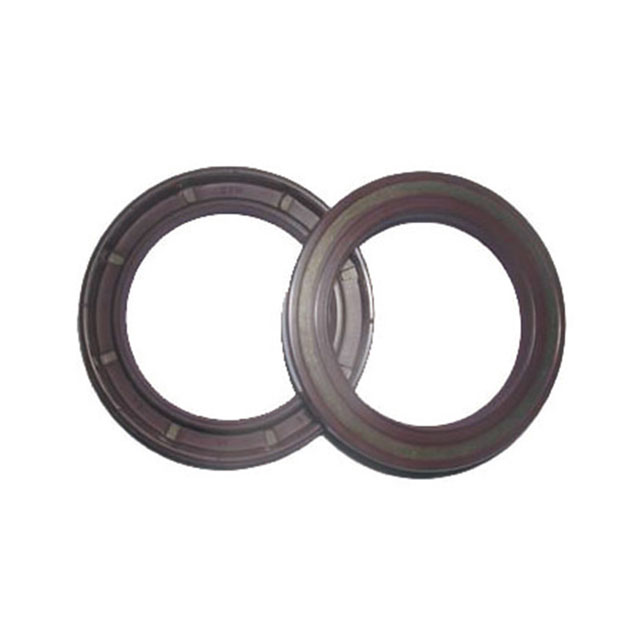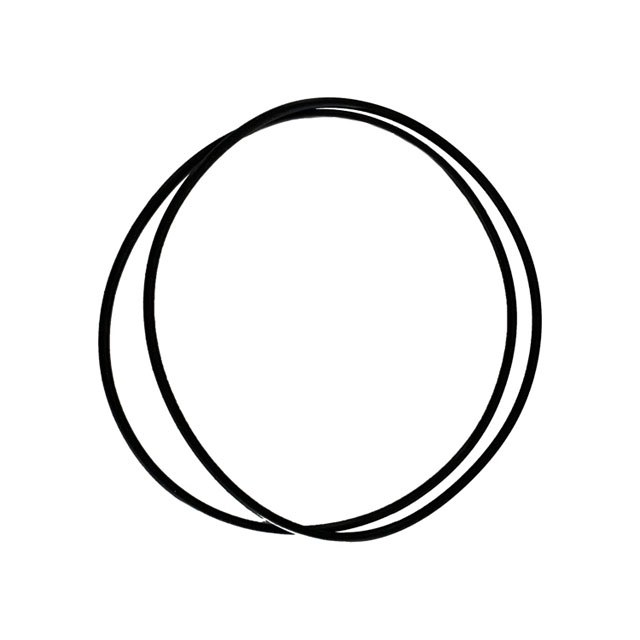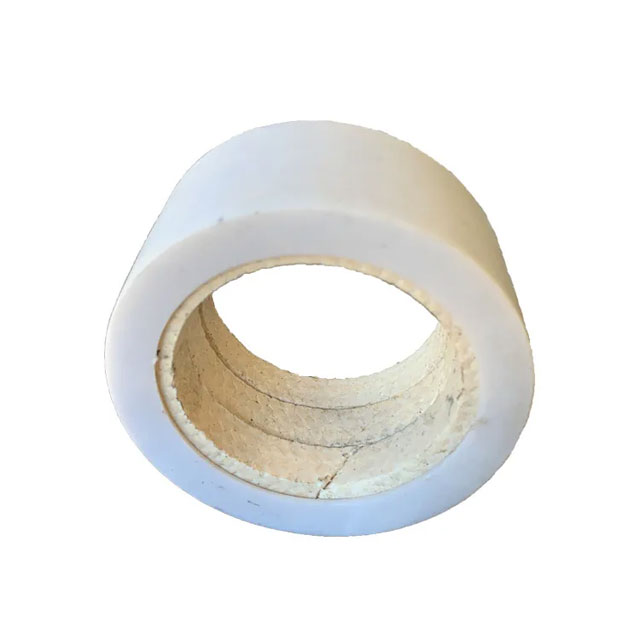WhatsApp: 86-13735815206 / 86-17392256505
WeChat: 86-13735815206 / 86-17392256505
Phone: 86-29-88680837
Mail: sales@hlsolidscontrol.com
Add: Room 804, Building 1, Western Cloud Valley Phase II, Fengxi New Town, Xixian New District, Shaanxi Province
WeChat: 86-13735815206 / 86-17392256505
Phone: 86-29-88680837
Mail: sales@hlsolidscontrol.com
Add: Room 804, Building 1, Western Cloud Valley Phase II, Fengxi New Town, Xixian New District, Shaanxi Province
Complex composition and environmental hazards of drilling waste mud
Time: 2024-07-03 Source: Solids Control System Author: Mrek
In today's energy extraction industry, drilling operations are an indispensable and crucial step. However, this process also generates a large amount of waste - drilling waste mud. The composition of this waste mud is complex, often containing a large number of substances harmful to the environment. If not properly treated, it will cause serious damage to the ecological environment.
The "Dark Side" of Drilling Waste Mud
During the exploration, drilling, and well servicing of oil and natural gas, a large amount of drilling waste mud is generated. The composition of this waste mud is complex, generally exhibiting high chemical oxygen demand (COD) and high pH. In recent years, due to the increase in drilling depth, the extension of the drilling cycle, and the widespread use of sulfonated drilling mud, the concentration of pollutants in the waste mud has become higher and higher.
During the drilling process, various activities generate a large amount of waste oil, wastewater, and mud. Depending on the size of the drilling rig and the depth of the well, the amount of discarded drilling fluid per well is generally between 200 and 3,000 cubic meters. These wastes are almost entirely discharged and accumulated in the waste mud storage pits, causing the harmful components in the drilling waste to become more complex, ultimately forming a multi-phase suspension of drilling waste mud composed of clay, weighting materials, various chemical treatment agents, wastewater, waste oil, and drill cuttings.
Specifically, the main components of drilling waste mud include:
Drilling fluid: Accounting for about 70% of the total waste. The drilling fluid has various chemical treatment agents and activators added, and its composition is relatively complex, generally containing heavy metals, oil, bentonite, alkali, and compounds (including organic matter) that are harmful to humans, livestock, and the environment. If these substances are directly discharged, they will seriously pollute the surrounding soil and water bodies.
Waste liquid: Mainly containing oil substances, as well as a small amount of organic treatment agents, heavy metals, and alkaline substances, with a high COD value, and cannot be directly discharged. If these waste liquids are discharged without treatment, they will have an adverse effect on the growth of crops.
Drill cuttings: Accounting for about 20% of the total waste, the pollutants contained in the drill cuttings are mainly drilling fluids, posing environmental pollution risks and cannot be directly discharged or randomly piled up. If not properly treated, the pollutants in the drill cuttings will enter the surrounding water bodies and soil through surface runoff or underground leakage, causing secondary pollution.
It can be seen that the composition of drilling waste mud is extremely complex, containing a large amount of substances harmful to the environment. If appropriate treatment measures are not taken, these wastes will cause serious damage to the surrounding ecological environment.
Environmental Hazards of Drilling Waste Mud
The environmental hazards caused by drilling waste mud are mainly reflected in the following aspects:
Water Pollution
Drilling waste mud contains a large amount of oil substances, heavy metals, and organic compounds that are toxic and harmful. If directly discharged into water bodies, it will seriously pollute the surrounding surface water and groundwater, endangering the survival of aquatic organisms. These pollutants can enter the human body through the food chain, posing a threat to human health. In addition, pollutants such as heavy metals may accumulate in the sediments of water bodies, long-term affecting the aquatic ecosystem.
Soil Pollution
The heavy metals, organic compounds, and other harmful substances in the drilling waste mud, if directly discharged or piled up on the ground, will infiltrate the soil, destroy the soil structure, reduce soil fertility, and affect the growth of crops. These pollutants may also enter the groundwater through underground leakage, causing secondary pollution. Persistent pollutants such as heavy metals may also accumulate in the soil for a long time, harming the soil ecosystem.
Air Pollution
During the drilling operation, the volatile organic substances in the drilling waste mud may be released into the atmosphere, causing air pollution. In addition, the waste mud may also generate odorous gases during the storage process, affecting the living environment of surrounding residents.
Ecological Destruction
If the toxic and harmful substances in the drilling waste mud enter the surrounding ecological environment, they will seriously endanger the survival of local plants and animals. Pollutants such as heavy metals can spread within the ecosystem through the food chain, causing an imbalance in the ecosystem and a decline in biodiversity.
It can be seen that if the drilling waste mud is not properly treated, it will cause serious damage to the surrounding water bodies, soil, air, and even the entire ecological environment. Therefore, effective treatment measures must be taken to minimize the impact of drilling waste mud on the environment.
HL Petroleum: Professional Provider of Drilling Waste Mud Treatment Solutions
Faced with the serious environmental problems caused by drilling waste mud, professional treatment technologies and equipment are particularly important. As a professional solids control system manufacturer in China, HL Petroleum has a comprehensive drilling waste mud treatment solution, committed to helping enterprises minimize the impact of this waste on the environment.
HL Petroleum has focused on the research and development of solids control systems for many years, and has accumulated rich industry experience. The company has a team of experienced technical experts who have a deep understanding of the actual needs of drilling operations and can provide customers with targeted solutions.
HL Petroleum not only provides advanced treatment equipment, but can also provide customers with comprehensive waste mud treatment solutions based on their needs, including scheme design, equipment installation and commissioning, operation and maintenance, and other full-service support, helping customers achieve standardized waste management. If you have any needs, please feel free to contact us.
The "Dark Side" of Drilling Waste Mud
During the exploration, drilling, and well servicing of oil and natural gas, a large amount of drilling waste mud is generated. The composition of this waste mud is complex, generally exhibiting high chemical oxygen demand (COD) and high pH. In recent years, due to the increase in drilling depth, the extension of the drilling cycle, and the widespread use of sulfonated drilling mud, the concentration of pollutants in the waste mud has become higher and higher.
During the drilling process, various activities generate a large amount of waste oil, wastewater, and mud. Depending on the size of the drilling rig and the depth of the well, the amount of discarded drilling fluid per well is generally between 200 and 3,000 cubic meters. These wastes are almost entirely discharged and accumulated in the waste mud storage pits, causing the harmful components in the drilling waste to become more complex, ultimately forming a multi-phase suspension of drilling waste mud composed of clay, weighting materials, various chemical treatment agents, wastewater, waste oil, and drill cuttings.
Specifically, the main components of drilling waste mud include:
Drilling fluid: Accounting for about 70% of the total waste. The drilling fluid has various chemical treatment agents and activators added, and its composition is relatively complex, generally containing heavy metals, oil, bentonite, alkali, and compounds (including organic matter) that are harmful to humans, livestock, and the environment. If these substances are directly discharged, they will seriously pollute the surrounding soil and water bodies.
Waste liquid: Mainly containing oil substances, as well as a small amount of organic treatment agents, heavy metals, and alkaline substances, with a high COD value, and cannot be directly discharged. If these waste liquids are discharged without treatment, they will have an adverse effect on the growth of crops.
Drill cuttings: Accounting for about 20% of the total waste, the pollutants contained in the drill cuttings are mainly drilling fluids, posing environmental pollution risks and cannot be directly discharged or randomly piled up. If not properly treated, the pollutants in the drill cuttings will enter the surrounding water bodies and soil through surface runoff or underground leakage, causing secondary pollution.
It can be seen that the composition of drilling waste mud is extremely complex, containing a large amount of substances harmful to the environment. If appropriate treatment measures are not taken, these wastes will cause serious damage to the surrounding ecological environment.
Environmental Hazards of Drilling Waste Mud
The environmental hazards caused by drilling waste mud are mainly reflected in the following aspects:
Water Pollution
Drilling waste mud contains a large amount of oil substances, heavy metals, and organic compounds that are toxic and harmful. If directly discharged into water bodies, it will seriously pollute the surrounding surface water and groundwater, endangering the survival of aquatic organisms. These pollutants can enter the human body through the food chain, posing a threat to human health. In addition, pollutants such as heavy metals may accumulate in the sediments of water bodies, long-term affecting the aquatic ecosystem.
Soil Pollution
The heavy metals, organic compounds, and other harmful substances in the drilling waste mud, if directly discharged or piled up on the ground, will infiltrate the soil, destroy the soil structure, reduce soil fertility, and affect the growth of crops. These pollutants may also enter the groundwater through underground leakage, causing secondary pollution. Persistent pollutants such as heavy metals may also accumulate in the soil for a long time, harming the soil ecosystem.
Air Pollution
During the drilling operation, the volatile organic substances in the drilling waste mud may be released into the atmosphere, causing air pollution. In addition, the waste mud may also generate odorous gases during the storage process, affecting the living environment of surrounding residents.
Ecological Destruction
If the toxic and harmful substances in the drilling waste mud enter the surrounding ecological environment, they will seriously endanger the survival of local plants and animals. Pollutants such as heavy metals can spread within the ecosystem through the food chain, causing an imbalance in the ecosystem and a decline in biodiversity.
It can be seen that if the drilling waste mud is not properly treated, it will cause serious damage to the surrounding water bodies, soil, air, and even the entire ecological environment. Therefore, effective treatment measures must be taken to minimize the impact of drilling waste mud on the environment.
HL Petroleum: Professional Provider of Drilling Waste Mud Treatment Solutions
Faced with the serious environmental problems caused by drilling waste mud, professional treatment technologies and equipment are particularly important. As a professional solids control system manufacturer in China, HL Petroleum has a comprehensive drilling waste mud treatment solution, committed to helping enterprises minimize the impact of this waste on the environment.
HL Petroleum has focused on the research and development of solids control systems for many years, and has accumulated rich industry experience. The company has a team of experienced technical experts who have a deep understanding of the actual needs of drilling operations and can provide customers with targeted solutions.
HL Petroleum not only provides advanced treatment equipment, but can also provide customers with comprehensive waste mud treatment solutions based on their needs, including scheme design, equipment installation and commissioning, operation and maintenance, and other full-service support, helping customers achieve standardized waste management. If you have any needs, please feel free to contact us.



